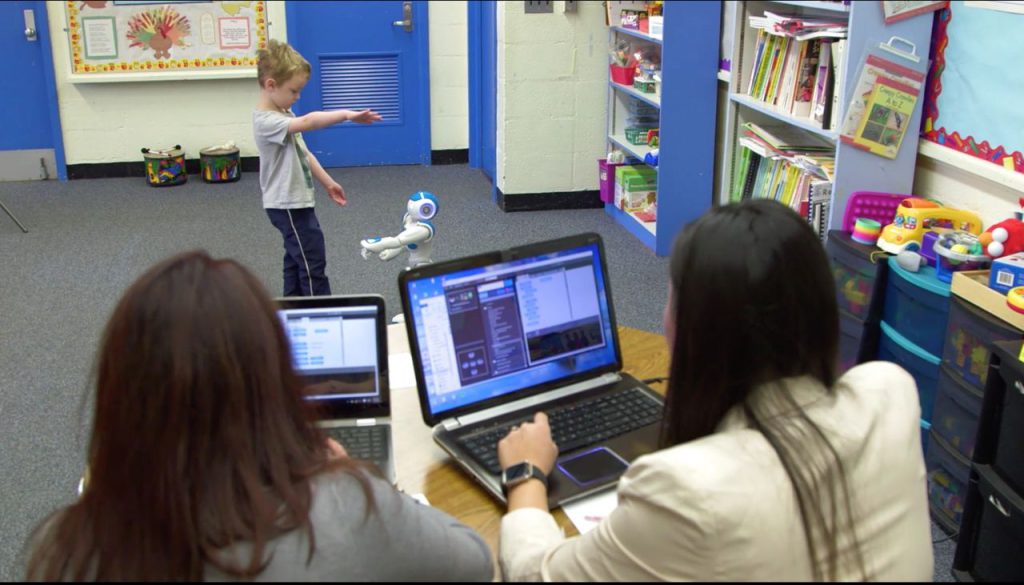In recent decades, assistive technology has been proven to be highly effective for the holistic development of special needs learners. Interestingly, robot-assisted instruction (RAI) is not a new practice. It has been around longer than most people think, only less developed than it is today. A branch of current-day robot technology focuses on teaching social skills, such as recognizing facial expressions, speech development and communication, eye contact, response to touch and movement, and more. Assistive technology, such as Robot-Assisted Instruction, has been tremendously useful in helping children develop learning readiness, as well as meet social and educational goals.
Social Skills Training
Social skills are a group of skills, rules, habits and behaviors and gestures people use to communicate with one another. Individuals generally learn basic social skills through observation and socialization.
However, individuals with autism may learn these skills differently; they can find it difficult to perceive what others feel or what the social context indicates. Social skills training for children with autism can help teach them the “hidden rules” of society: the subtle nuances of speech and language that require inference.
Those who do show improvement in their social skills observe significant changes and find themselves less frustrated by others and more comfortable in social settings. In addition, they will likely make new friends and maintain relationships more easily.
Early intervention can greatly improve an autistic child’s learning and development throughout his/her life. Individuals with autism can learn to relate to other people on a deeper level, gain a greater understanding of how the world works, and gain the skills to form close relationships and friendships.
Therapeutic Intervention With Robot-Assisted Instruction
Robot-assisted therapy is a form of treatment that assists in augmenting traditional educational and social skills training for children with autism. It can be viewed as a game-changing method to help individuals with special needs.
A wide variety of robots can perform various social and behavioral functions to improve the quality of life for individuals with autism. Not all therapists are familiar with the literature celebrating the benefits of robot-assisted instruction, nor are they sure how to integrate them into their practice, but the systems are quite impressive and intuitive to use. Professionals at MOVIA Robotics are happy to work with educators, families, and facilitators to ensure children with autism and other special needs receive differentiated and tailored instruction through their RAI systems!
One of the main goals of robot-assisted therapy is to teach special needs individuals how to navigate social interactions. Research has shown that individuals with autism respond well to learning social skills.
In A Nutshell
The goal of robot-assisted therapy is to ensure meaningful behavioral changes and improvement in the lives of individuals with autism spectrum disorder. RAI can teach social skills to children with autism so that they can be empowered to navigate social relationships independently in their lives. Find out how your child can benefit from robot-assisted instruction systems for enhancing social skills and learning preparation. Visit us here today!

